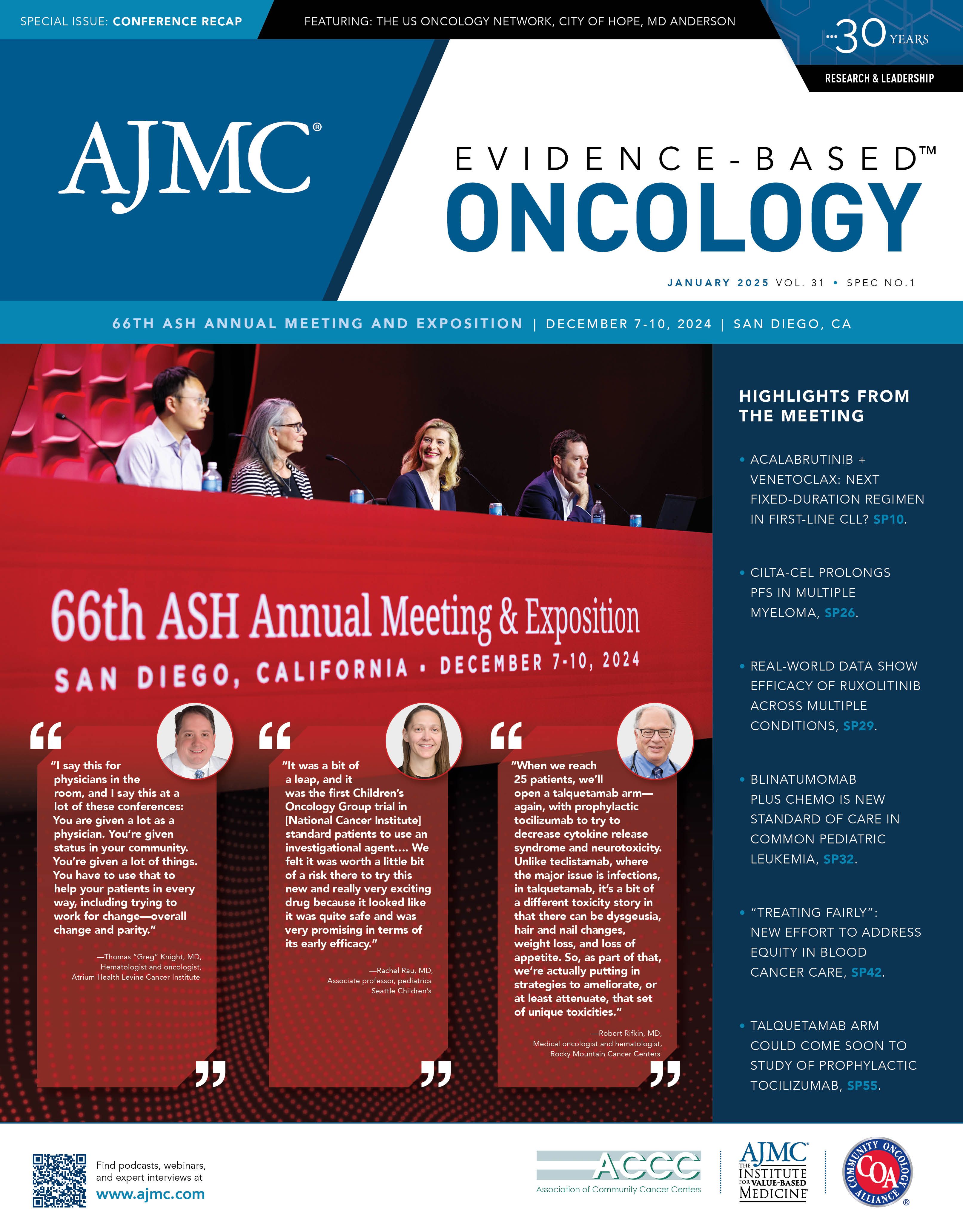- Center on Health Equity & Access
- Clinical
- Health Care Cost
- Health Care Delivery
- Insurance
- Policy
- Technology
- Value-Based Care
Socioeconomic Factors Limit Access to Stem Cell Transplantation in AML
Social determinants of health have a more pronounced effect on mortality among patients with acute myeloid leukemia (AML) who did not receive transplant vs those who did.
Socioeconomic disparities significantly impacted receipt of allogeneic hematopoietic stem cell transplant (allo-HCT) for acute myeloid leukemia (AML), the only potentially curative therapy for the disease, according to findings from a multicenter study presented at the 2024 ASH Annual Meeting.
Results from the study revealed that level of education, reliance on government assistance programs, and poverty level were barriers to receipt of allo-HCT. The leading factor, which was statistically correlated to a lack of receiving allo-HCT, was having less than a high school education, which led to a 30% drop in the likelihood of all-HCT receipt (aHR, 0.70; 95% CI, 0.57-0.87). Other factors were correlated, although they did not pass statistical significance. Once barriers were overcome, and an allo-HCT was received, the study found that survival were comparable across socioeconomic backgrounds.
Natalie Wuliji, DO, of Fred Hutchinson Cancer Center and theUniversity of Washington School of Medicine.

"Once patients were able to overcome the barriers and receive allo transplant, the outcomes could be comparable, regardless of their socioeconomic backgrounds; however, further research is needed to validate this observation," lead presenter Natalie Wuliji, DO, assistant professor in the Clinical Research Division at Fred Hutch, and acting instructor in the Division of Hematology and Oncology, University of Washington School of Medicine, said in a presentation of the results during a press briefing. "To the best of our knowledge, this is the first study to prospectively evaluate the impact of specific social determinants of health on the receipt of allo transplant."
Socioeconomic indicators at the zip-code level were analyzed, including median income, educational attainment, housing instability, and participation in government assistance programs like supplemental security income (SSI) and the supplemental nutrition assistance program (SNAP). The study evaluated three critical outcomes: mortality without transplant, likelihood of receiving a transplant, and mortality after transplant. These factors were further overlayed with patient and disease characteristics and quality of life/frailty measures to adjust for confounding factors, resulting in an adjusted hazard ratio (aHR).
The study enrolled 692 patients with newly diagnosed or relapsed/refractory AML between 2013 and 2017, spanning 13 treatment centers in the United States. Patients were predominantly older adults, with a large proportion over 65 years of age (43%). The Karnofsky Performance Status score exceeded 70 for 83% of those included, with an augmented HCT-CI of 4 or more for 60%. The study population was predominantly white (86%) and black (6%).
Most patients had newly diagnosed AML (77%), with 14% having relapsed/refractory AML. Nearly half were deemed to be intermediate risk by ELN (43%) and 36% had adverse risk per ELN. Following initial treatment, 56% experienced a complete response. Overall, from the study population, 46% received an allo-HCT.
For those who did not receive an allo-HCT, the highest rates of mortality were among patients who received SSI In this group, there was a 40% higher risk of mortality without allo-HCT (aHR, 1.4; 95% CI, 1.01-1.94). Those with less than a high school education also were more likely to experience mortality without allo-HCT, with a 24% increase in risk (aHR, 1.24; 95% CI, 1.02-1.49).
"Social risk of the neighborhood increased as seen here by reliance on government assistance programs, living below the federal poverty level, or having a high percentage of patients that low educational attainment," Wuliji said. "These patients were more likely to die without transplant. The association was particularly strong for patients on government assistance programs, such as SSI."
For receipt of an allo-HCT, education status again played the largest role and represented the only statistically significant factor. SSI or SNAP participation were also leading factors having aHRs of 0.78 and 0.91, respectively. “This underscores a critical need to address social determinants of health to ensure equitable access to curative therapies,” Wuliji said.
Once an allo-HCT was received, the role of these factors appeared to have a less pronounced effect on mortality. The confidence intervals for mortality after allo-HCT were large, with no factor reaching statistical significance. For those on SSI, the aHR was 1.22 (95% CI, 0.81-1.82). For those with less than a high school education, the aHR was 1.17 (95% CI, 0.86-1.58). For those on SNAP, the aHR was 1.12 (95% CI, 0.92-1.37).
Findings from the study suggest that once patients overcome the barriers to accessing transplant, their outcomes align with those of their more advantaged counterparts, Wuliji said. “Overcoming these barriers could level the playing field for patients, offering comparable survival outcomes regardless of socioeconomic background.”
The findings from the study examined allo-HCT but could be transferable to other high-cost treatments modalities for hematologic malignancies, such as the CAR T-cell therapies, Wuliji noted. “By addressing these issues, we can ensure that all patients, regardless of their socioeconomic status, have the opportunity to benefit from potentially curative treatments,” she concluded.
Reference
Wuliji N, Gooley T, Jones S, et al. Impact of socioeconomic factors on access to and outcomes of allogeneic hematopoietic cell transplantation (allo-HCT) for acute myeloid leukemia (AML): A multi-center observational study. Presented at: ASH 2023 Annual Meeting & Exposition. December 7-10; San Diego, CA. Abstract #6

